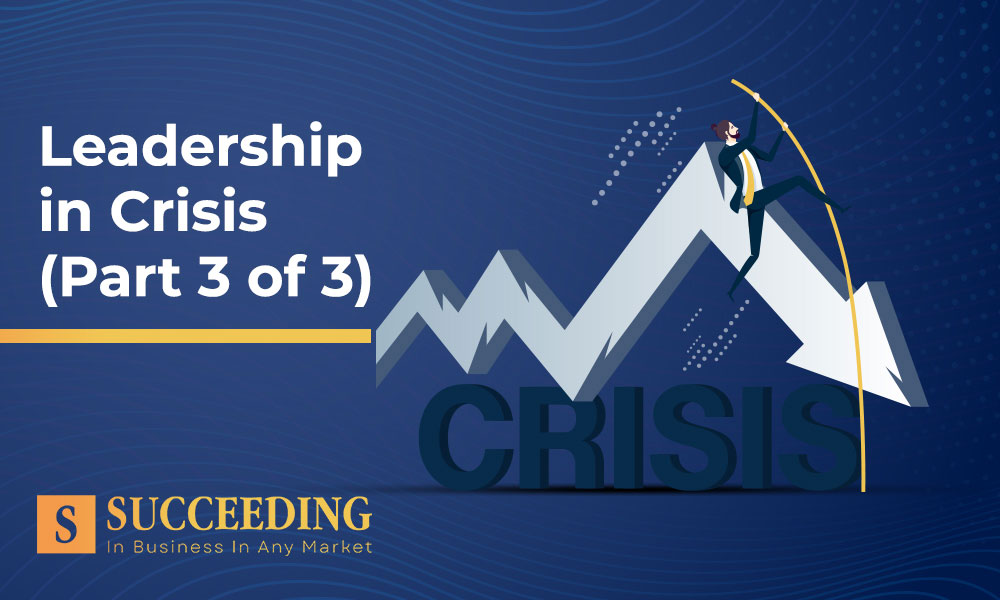Post Date: December 31, 2023

Assembling the Right Team for Crisis Response:

Leadership in Crisis: A crisis response team is the backbone of effective crisis management. Leaders must assemble the right team, composed of individuals with diverse expertise and skills. Here are key considerations when assembling a crisis response team:
1. Diverse Skill Sets:
The team should include members with a range of skills, from crisis communication and technical expertise to legal and logistical knowledge.
2. Clear Roles and Responsibilities:
Define clear roles and responsibilities for team members to avoid confusion during a crisis.
3. Cross-Functional Teams:
Consider forming cross-functional teams that can address various aspects of a crisis simultaneously.
4. Leadership Structure:
Establish a clear leadership structure within the team, designating leaders and decision-makers.
5. Training and Preparedness:
Ensure that team members are trained and prepared for crisis scenarios through regular drills and simulations.
6. Communication Protocols:
Establish communication protocols within the team to ensure efficient information sharing.
Fostering Teamwork and Collaboration Under Pressure:
Effective teamwork is the linchpin of crisis response. Leaders must foster a culture of collaboration and teamwork, even under extreme pressure. Here’s how to promote teamwork during crises:
1. Trust Building: Build trust among team members through transparent communication and consistent support.
2. Open Communication: Encourage open and honest communication within the team, allowing members to share ideas, concerns, and updates freely.
3. Delegation: Empower team members to make decisions within their areas of expertise, delegating authority when needed.
4. Conflict Resolution: Address conflicts promptly and constructively to prevent them from derailing crisis response efforts.
5. Support and Recognition: Recognize and support the efforts of team members, acknowledging their contributions to boost morale.
6. Continuous Improvement: Learn from each crisis response and apply lessons to improve teamwork and collaboration in future scenarios.
The Importance of Clear and Transparent Communication:
Effective communication is the lifeblood of crisis management. Leaders must prioritize clear and transparent communication to keep stakeholders informed and reassured. Here are key aspects of communication during crises:
1. Information Sharing: Ensure that critical information is shared promptly within the organization and with external stakeholders.
2. Decision-Making: Effective communication informs decision-making, enabling leaders to make informed choices.
3. Stakeholder Engagement: Keep stakeholders, including employees, customers, shareholders, and the community, informed and engaged throughout the crisis.
4. Crisis Coordination: Clear communication is essential for coordinating crisis response efforts among team members and stakeholders.
5. Trust and Credibility: Transparent communication builds trust and credibility, demonstrating the organization’s honesty and accountability.
6. Reputation Management: Communication plays a pivotal role in managing the organization’s reputation during a crisis. Well-managed communication can mitigate reputational damage.
7. Regulatory Compliance: In some cases, legal and regulatory requirements mandate communication during crises. Failure to communicate adequately can lead to legal consequences.
Given the importance of communication, leaders should prioritize transparency, timeliness, clarity, and consistency in their communication strategies. Additionally, they should adapt their communication approach based on the specific characteristics of the crisis and the needs of stakeholders.
Tips for Maintaining Trust and Credibility During Crises:
Trust and credibility are fragile during crises and must be carefully maintained. Here are practical tips for preserving trust and credibility:
1. Be Honest and Transparent: Share information openly, even if it reflects negatively on the organization. Concealing information can erode trust.
2. Acknowledge Mistakes: If the organization has made mistakes contributing to the crisis, acknowledge them. Taking responsibility shows humility and a commitment to improvement.
3. Consistent Messaging: Ensure that all communication channels convey consistent messages and information.
4. Empathetic Communication: Show empathy and understanding toward stakeholders who are affected by the crisis. Address their concerns and needs.
5. Accessibility: Make leadership accessible to stakeholders who have questions or concerns. Provide avenues for them to seek clarification and assistance.
6. Follow Through: Honor commitments made during the crisis. Failing to follow through on promises can damage credibility.
7. Prepared Spokespeople: Designate trained spokespeople who can effectively communicate with the media and the public. Ensure they are well-informed about the crisis and the organization’s response.
8. Timely Updates: Provide regular updates on the progress of crisis resolution and any changes in the situation.
9. Use Multiple Channels: Utilize a variety of communication channels, including social media, press releases, and direct communication with stakeholders, to reach a broad audience.
10. Seek Feedback: Encourage feedback from stakeholders on the organization’s response. Use feedback to make improvements.
Note:
By prioritizing trust and credibility, leaders can help their organizations weather crises while maintaining the support and confidence of stakeholders.

conclusion:
This concludes our three-part Part 1 & Part 2 series on the 20 Roles of Leadership in Crisis Management. We’ve explored the significance of crisis management, leadership traits crucial during crises, case studies of successful crisis leaders, assembling the right crisis response team, fostering teamwork and collaboration, the importance of clear and transparent communication, and tips for maintaining trust and credibility. Effective crisis leadership is an ongoing journey, and by embracing these roles and strategies, leaders can guide their organizations through challenging times with resilience and success.






